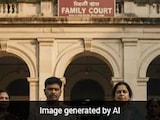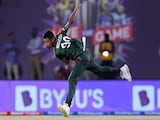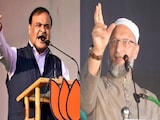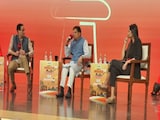New Delhi:
With the arrest of Spice Jet pilots Amit Mundra and Ajay Chaudhary in Jaipur who, on paper, faked 200 hours of flying experience, mandatory to fly commercial, the number of 'fake' pilots in Indian skies has risen to 17. Amit and Ajay are 2005 batch trainees of the Rajasthan Flying Club.
''There was a conspiracy between these pilots and the Rajasthan Flying School. They created fudged records to help pilots who had not completed the Minimum Flying Hours to become eligible for Commercial Pilot Licences,'' said Ajit Singh, Additional Director General, Anti-Corruption Bureau, Rajasthan.
The Rajasthan Anti-Corruption Bureau has named 13 fake pilots from the Flying School in Jaipur and the Haryana Institute of Civil Aviation.
Spice Jet: Amit Mundra, Ajay Chaudhary
Jet Lite, Jet Airways: Nitin Jain, Rajesh Mirani, Sanjiv Gupta
Air India: Rakesh Mehta, Malini Iyer, Saahil Mallik, Nidhi Vashishth
Some of them are still flying, pending inquiry.
One of the arrested SpiceJet pilots, Anuj Chaudhary, said, ''We were too young to realise that we should take receipts for all payments. We gave money to the Instructor of our flying school, but he didn't pass the money on to the government. We have a receipt only for the Rs. 1 lakh that we first paid. After that had we asked for receipts, they would not have allowed us to fly.''
But a close look at the licence-obtaining procedure shows both parties have to be involved.
In order to get a commercial licence for a co-pilot, a candidate must have passed class 12 with Physics and Maths. The candidate should also have passed the Directorate General of Civil Aviation (DGCA) flying exams and have at least 250 flying hours over 5 years.
To get a commercial pilot licence, a candidate must have 1,500 flying hours as co-pilot and should have passed the DGCA advanced flying exams
There are several areas in which forgery is possible.
Students unable to clear their Maths and Physics exams forge mark sheets. Flying instructors who issue certificates often forge entries to show higher number of flying hours.
This way the flying club saves money and the student gets his licence faster.
Even in examinations conducted by the DGCA, which are supposed to be fool-proof, students who fare badly forge their mark sheets and submit it back to DGCA when they apply for licences. And in most cases, the DGCA does not corroborate the documents with its own records.
Mr. Kanu Guhain, Former Director General of Civil Aviation said, ''Every point where manual inputs are required, there is scope for forgery.''
The Aviation Ministry has woken up to the huge rot in the industry. The Ministry has decided to scrutinize all 4,000 licences issued in the last five years and debug the entire examination system. Until the review, however, thousands of travellers will continue to fly in huge uncertainty.
''There was a conspiracy between these pilots and the Rajasthan Flying School. They created fudged records to help pilots who had not completed the Minimum Flying Hours to become eligible for Commercial Pilot Licences,'' said Ajit Singh, Additional Director General, Anti-Corruption Bureau, Rajasthan.
The Rajasthan Anti-Corruption Bureau has named 13 fake pilots from the Flying School in Jaipur and the Haryana Institute of Civil Aviation.
Spice Jet: Amit Mundra, Ajay Chaudhary
Jet Lite, Jet Airways: Nitin Jain, Rajesh Mirani, Sanjiv Gupta
Air India: Rakesh Mehta, Malini Iyer, Saahil Mallik, Nidhi Vashishth
Some of them are still flying, pending inquiry.
One of the arrested SpiceJet pilots, Anuj Chaudhary, said, ''We were too young to realise that we should take receipts for all payments. We gave money to the Instructor of our flying school, but he didn't pass the money on to the government. We have a receipt only for the Rs. 1 lakh that we first paid. After that had we asked for receipts, they would not have allowed us to fly.''
But a close look at the licence-obtaining procedure shows both parties have to be involved.
In order to get a commercial licence for a co-pilot, a candidate must have passed class 12 with Physics and Maths. The candidate should also have passed the Directorate General of Civil Aviation (DGCA) flying exams and have at least 250 flying hours over 5 years.
To get a commercial pilot licence, a candidate must have 1,500 flying hours as co-pilot and should have passed the DGCA advanced flying exams
There are several areas in which forgery is possible.
Students unable to clear their Maths and Physics exams forge mark sheets. Flying instructors who issue certificates often forge entries to show higher number of flying hours.
This way the flying club saves money and the student gets his licence faster.
Even in examinations conducted by the DGCA, which are supposed to be fool-proof, students who fare badly forge their mark sheets and submit it back to DGCA when they apply for licences. And in most cases, the DGCA does not corroborate the documents with its own records.
Mr. Kanu Guhain, Former Director General of Civil Aviation said, ''Every point where manual inputs are required, there is scope for forgery.''
The Aviation Ministry has woken up to the huge rot in the industry. The Ministry has decided to scrutinize all 4,000 licences issued in the last five years and debug the entire examination system. Until the review, however, thousands of travellers will continue to fly in huge uncertainty.















